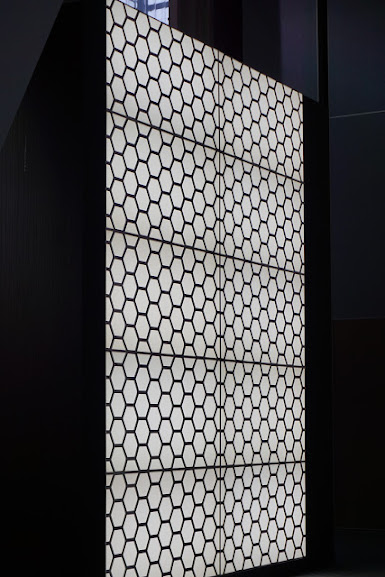A Bit of East Hampton History Gleaned In Marshall Watson and Paul Sparks' Home
Learning About The History
of Gardiner's Island
From Inside A Beautiful Home
Chippendale gates lead to a gorgeous view of Gardiner's Bay
Al fresco dining on brick
I just love the Springs enclave of East Hampton. The land is rich with plentiful views of Osprey and marsh. It is refreshing and different from the rest of the manicured and sculptured Hamptons, instead it's natural with raw beauty. We bought our own home in Springs over twenty years ago. I knew our neighborhood has long been a draw for artists, writers and those with poetic sensibilities, but I learned how deep the history ran while visiting the home of nationally recognized interior designer Marshall Watson and his husband Paul Sparks in the Gardiner's Bay section of Springs. The home is a Federal-Style house rich in texture, detail and all utilizing Watson's signature style of "calm and lightness of being" in a classic beauty.
We had the opportunity to tour the home during the East Hampton Historical House and Garden Tour on Thanksgiving weekend, which is a rare opportunity to see unique and historical homes in the East End. My son, daughter and I met homeowner filmmaker Paul Sparks in the library of the home which has coveted views of the Bay and Gardiner's Island. As we peeked out the window, Sparks graced us with a thorough and spontaneous history of the island from this unique vantage point.
He told us a great deal about Gardiner's Island, which is a five mile long island with 27 miles of coastline and 1,000 acres of beautiful topography, as well as a long history tied to the inception of the the Hamptons. The island has been owned by one family for hundreds of years and has been fraught with scandal including stories of pirates, American Indians, a kidnapping and more. The island was settled in 1639 by Englishman Lion Gardiner who acquired it serendipitously. The story goes a little something like this-- Gardiner bought the island from the Montauketts American Indians after helping the tribe when a rival Connecticut tribe kidnapped the Montaukett chief’s daughter and family during a wedding. Gardiner stepped in and rescued them during the infamous Pequot War. Gardiner referred to the island as the “Isle of Wight” (an English term). As payment for his assistance, the Montaukkets agreed to sell the island to Gardiner, and along with the island, Gardiner received a coveted Lordship by the King of England.
The stories about the island and its inhabitants are lengthy-- but one thing is for certain, Gardiner’s Island is at the crux of many important historical moments in American history. Apparently, even though during the American Revolution the Gardiner's sided with the colonists, a fleet of British ships invaded the island planning to make it their very own retreat. Then, during the War of 1812, British troops buried $30,000 worth of treasure between Bostwick's Point and the Manor House and threatened to kill the island’s owners if the treasure was lost. After one of the English Privateer's (William Kidd) was executed in Boston, Gardiner was ordered to deliver the treasure of gold coins, silver bars, diamonds, rubies and more to the courts.
I can certainly understand how Watson and Sparks fell in love with the abandoned lot in 1999, which at the time had overgrown gardens and landscaping. With their appreciation for the coveted view of Gardiner’s Bay and their talented vision, they soon created the house with elaborate, meandering gardens. Today, it's a magical and historic gem with gorgeous classic interiors, and it has been featured in both local and national magazines as well as Watson's The Art of Elegance. Bravo to them for keeping the East End of Long Island in its splendor!
Happy Nesting
XO Tamara
pergola and antique garden urns
Delf tile



















